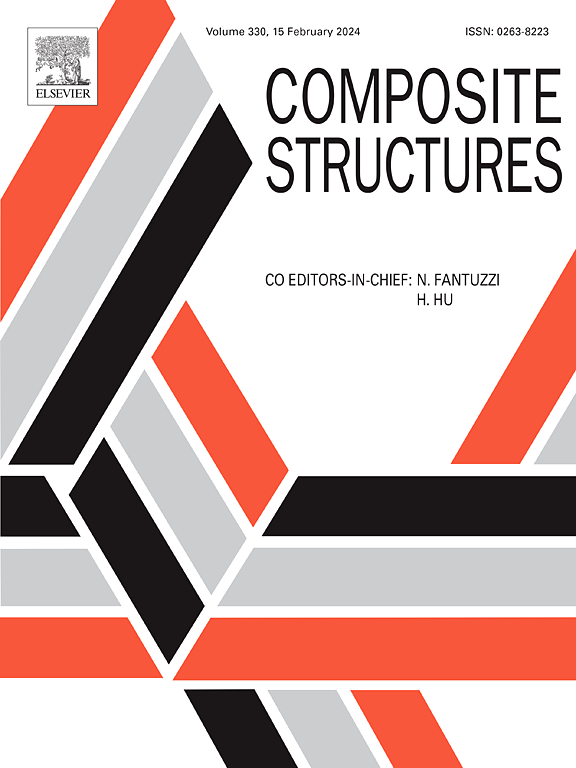Modeling via cohesive phase-field framework for chemo-mechanical fracture of heterogeneous composites
IF 6.3
2区 材料科学
Q1 MATERIALS SCIENCE, COMPOSITES
引用次数: 0
Abstract
Predicting fracture of heterogeneous composites under chemo-mechanical circumstances is still challenging, owing to intricate interactions between different components and complex crack paths. Herein, we present a novel phase-field model (PFM) based framework for chemo-mechanical fracture of heterogeneous composites from a thermodynamically consistent formulation. By introducing two phase-field variables, both interface and crack are represented in a smeared manner, and the damage of bulk and interface is unified for providing computational conveniences. To characterize quasi-brittle fracture, a cohesive zone model (CZM) with the linear traction-separation law (TSL) is incorporated to the PFM through elegantly choosing optimal constitutive functions. Besides, the material properties are regularized by the interface phase-field to avoid the discontinuity in stress across the material interface, and an analytical expression of modified interface fracture toughness is derived to guarantee the energetic equivalence. For numerical implementation, a staggered solution scheme is adopted to enable algorithmic efficiency and robustness. Representative numerical experiments are conducted to demonstrate the capability of the framework in capturing fracture behaviors including matrix cracking, interface failure, and crack branching and merging.
基于内聚相场框架的非均质复合材料化学-力学断裂建模
由于不同组分之间相互作用复杂,裂纹路径复杂,非均质复合材料在化学-力学环境下的断裂预测仍然具有挑战性。在此,我们提出了一种基于相场模型(PFM)的新型框架,用于非均相复合材料的化学力学断裂,该框架采用热力学一致的公式。通过引入两个相场变量,对界面和裂纹进行模糊表示,将体损伤和界面损伤统一起来,为计算提供方便。为了描述准脆性断裂,通过选择最优本构函数,将具有线性牵引分离律的内聚区模型(CZM)引入到PFM中。此外,通过界面相场对材料性能进行正则化,避免了应力在材料界面上的不连续,并推导了修正界面断裂韧性的解析表达式,以保证能量等效。在数值实现中,采用交错求解方案,提高了算法的效率和鲁棒性。进行了有代表性的数值实验,以证明该框架能够捕捉断裂行为,包括基体开裂、界面破坏和裂纹分支和合并。
本文章由计算机程序翻译,如有差异,请以英文原文为准。
求助全文
约1分钟内获得全文
求助全文
来源期刊

Composite Structures
工程技术-材料科学:复合
CiteScore
12.00
自引率
12.70%
发文量
1246
审稿时长
78 days
期刊介绍:
The past few decades have seen outstanding advances in the use of composite materials in structural applications. There can be little doubt that, within engineering circles, composites have revolutionised traditional design concepts and made possible an unparalleled range of new and exciting possibilities as viable materials for construction. Composite Structures, an International Journal, disseminates knowledge between users, manufacturers, designers and researchers involved in structures or structural components manufactured using composite materials.
The journal publishes papers which contribute to knowledge in the use of composite materials in engineering structures. Papers deal with design, research and development studies, experimental investigations, theoretical analysis and fabrication techniques relevant to the application of composites in load-bearing components for assemblies, ranging from individual components such as plates and shells to complete composite structures.
 求助内容:
求助内容: 应助结果提醒方式:
应助结果提醒方式:


